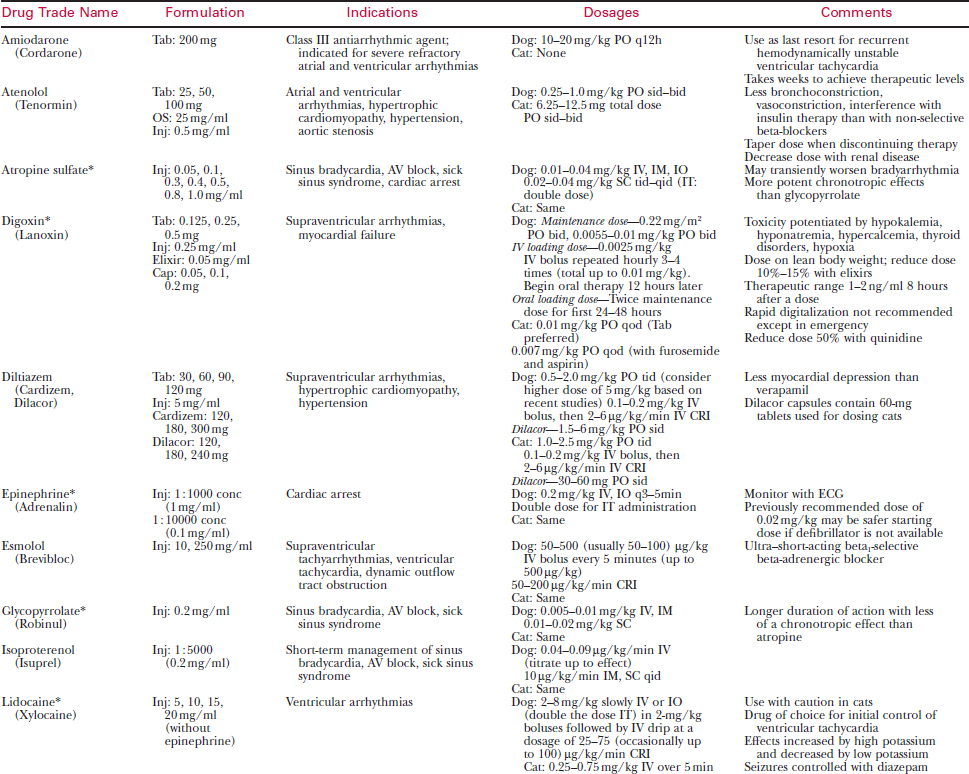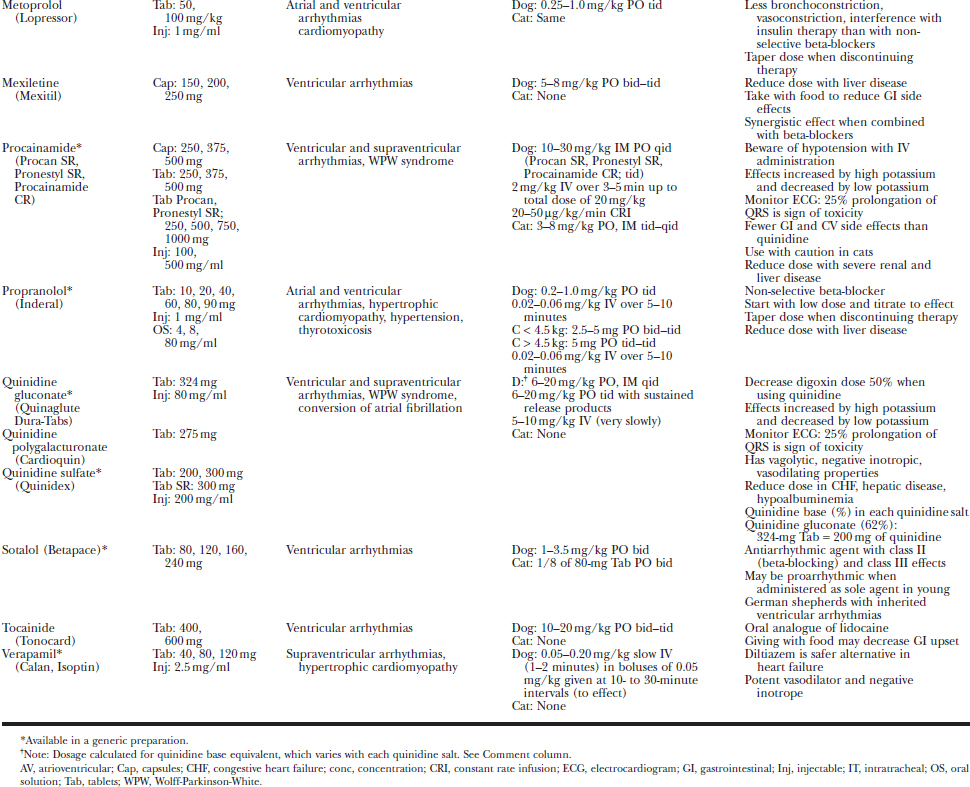Chapter 145 Disorders of Cardiac Rhythm
Cardiac arrhythmias include disorders of cardiac impulse formation, conduction, rate, and regularity. Terms such as dysrhythmia, ectopia, and ectopy also are used to identify arrhythmias. Cardiac arrhythmias can be benign and clinically insignificant, or they can cause clinical signs. They can even progress to malignant arrhythmias that lead to heart failure, syncope, or sudden death.
Causes of cardiac arrhythmias include heart disease and disorders involving the autonomic nervous system, endocrine system, electrolytes, and other body systems. Anesthetic agents and other drugs can precipitate rhythm disturbances. Cardiac arrhythmias are diagnosed and classified electrocardiographically; see Chapter 144 for additional pertinent information regarding electrocardiography. A summary of the clinical pharmacology of drugs used in the treatment of congestive heart failure (CHF) is found in Chapter 146.
ETIOLOGY
Table 145-1 CLASSIFICATION OF CARDIAC ARRHYTHMIAS
Table 145-2 CAUSES OF CARDIAC ARRHYTHMIAS
Adapted from Miller MS, Tilley LP: Treatment of arrhythmias and conduction disturbances. In Miller MS, Tilley LP, eds.: Manual of Canine and Feline Cardiology. Philadelphia: WB Saunders, 1995, with permission.
Cardiac Causes in Dogs
Heredity (genetics not documented in all cases)
Atrial and/or ventricular arrhythmias
MECHANISMS
DIAGNOSTIC APPROACH
Systematic Evaluation of the Electrocardiographic Strip
SUPRAVENTRICULAR RHYTHMS
Sinus Arrhythmia
Definition
Etiology and Clinical Significance
Sinus Bradycardia
Etiology and Clinical Significance
Treatment
Sinus Block and/or Sinus Arrest (Fig. 145-1)
Definition
Etiology and Clinical Significance
Sinus Tachycardia
Etiology and Clinical Significance
Electrocardiographic Differentials
Atrial Premature Complexes (Fig. 145-2)
Definition
Etiology and Clinical Significance
Electrocardiographic Differentials
Atrial Tachycardia (Figs. 145-3 and 145-4)
Definition
Stay updated, free articles. Join our Telegram channel

Full access? Get Clinical Tree






